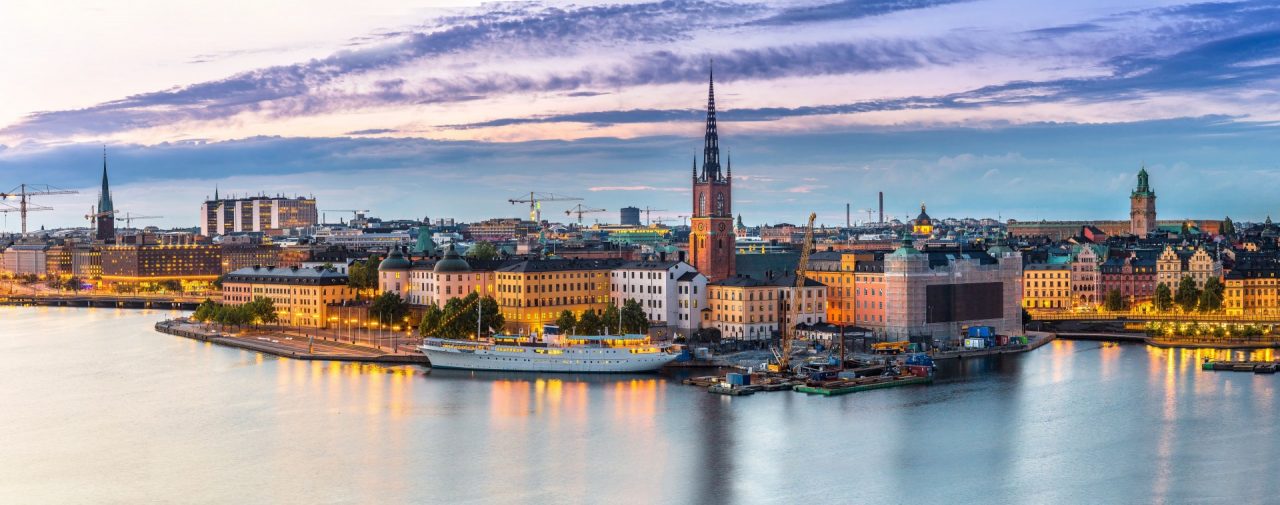Tall, sustainable skyscrapers are sprouting on the Scandinavian Peninsula.
First came Mjøstårnet, an 85.4-metre (280-foot) skyscraper in Brumunddal, about an hour and a half from Oslo, capital of Norway. Next came Sara Kulturhus, an 80-metre (262.5-foot), 20-story building completed a few weeks ago in the Swedish town of Skellefteå.
These two distinct buildings share a common feature: both are constructed entirely of wood, an architectural and design choice that makes them two of the world’s most sustainable civil infrastructures. In their respective uses of materials and energy systems, they’ve both been designed to reduce all forms of atmospheric pollution.
The Mjøstårnet, a “km-zero” vertical district
The vegetation-rich forests of southeast Norway stretch on for ages. The wood used to build Mjøstårnet – currently the world’s tallest wooden building – was sourced from these very forests, a stone’s throw from the town of Brumunddal. With a population of under 10,000, located not too far from Oslo, the small town of Brumunddal is where this record-breaking skyscraper first took shape. The concept for it was a bona fide “vertical district.”
“District” is fitting: the skyscraper contains a hotel, restaurants, apartments, offices, recreational areas, a cafeteria, swimming pool and panoramic terrace. Given its location on the shores of Lake Mjosa, Norway’s largest body of water, Mjøstårnet was designed to seamlessly integrate with nature. (Mjøstårnet, in fact, translates literally as “the tower of Lake Mjosa”).
That integration was clear early in the planning stages: the building was designed to take shape over 18 floors along an 11,300 square metre area (37,073 square feet), while maintaining a frame made entirely of spruce wood and organic materials. It’s not just the wood that’s “green”: alongside the building’s dominant material, its energy supply and internal water recycling system have both been designed to be green, autonomous, and waste- and pollution-free.
Plus, for every tree cut down to construct the building’s frame, two were planted in the wild, helping ensure reforestation in the area.

The Sara Kulturhus , a carbon-negative skyscraper
Six years ago, when architects Oskar Norelius and Robert Schmitz first presented their plans for the Sara Kulturhus, reception was lukewarm at best. Few believed it was possible to build a skyscraper with the innovative features and control over CO2 emissions that they were proposing.
But skeptics were proven wrong, and the mission was accomplished just a few weeks ago, when the Sara Kulturhus was inaugurated in Skellefteå, Sweden. One of the world’s tallest wooden skyscrapers, the 80-metre-high (262.5 foot), 20-story building hosts a cultural center and hotel. As with the case of Mjøstårnet, the building’s wood was sourced from nearby forests and was also used to build a 1,200-seat concert hall, library, and elevator system.
The upper floors of the building, which house the hotel, were instead built using prefabricated wooden modules.
But the building has one feature that bests all others. Through its green roof, its wood-trapped Co2, and the post-construction reforestation operations in place, the Sara Kulturhus is not just carbon-neutral, but plans to be carbon-negative. Ultimately, throughout its lifespan, it will not just cut back on pollution, but actually clean up the environment.
The race to build more wooden skyscrapers
Sustainable construction has made great strides in recent years. Before Scandinavian supremacy took hold in the sector, Austria ranked high for its efforts with the Viennese HoHo tower, an 84-metre-high (276-foot) structure, built with a combination of wood and concrete. On the other side of the pond, Vancouver, Canada is home to the entirely wood, 53-meter (174-foot) “bio building” of Brock Commons, previously the tallest wooden building in the world before Mjøstårnet came on the scene.
But Japan is primed to best all these examples of sustainable construction when it completes W350, a 350-metre (1148-foot) tower made entirely of wood.
W350 will bring about a real test and perhaps set a new blueprint for wood as an alternative, more sustainable material for similarly ambitious architectural projects.

